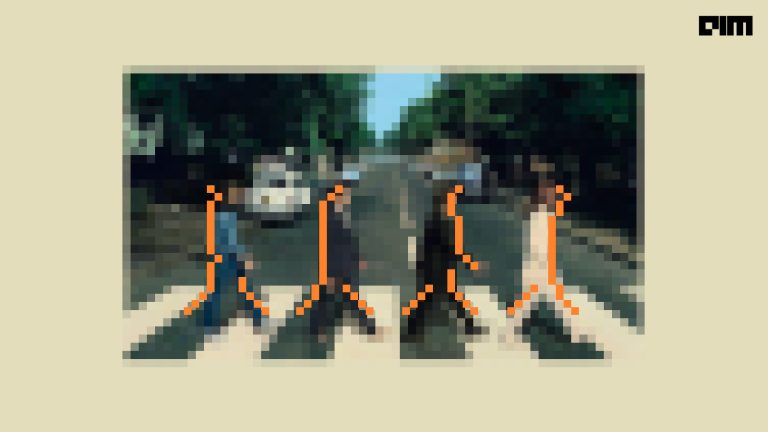|
Listen to this story
|
Gurugram-based Spyne helps e-commerce platforms create and upgrade high-quality product images at scale with AI. Founded in 2018, the deep-tech startup caters to 80+ enterprise customers in 15+ countries and 23+ marketplaces, processing over 500 images per minute on average.
“In general, the investment is looking to dry up in tech space. But, in my opinion, good companies with strong financials and growth prospects will still get the capital from the customers and investors alike. In fact, in this environment, companies with sound business models and low burn rates would take a big leap and grow to the next stage,” said Spyne CEO Sanjay Kumar.
In an exclusive interaction with Analytics India Magazine, Sanjay discussed Spyne’s journey so far.
AIM: What made you start Spyne?
Sanjay: I have been part of the technology industry for almost 13 years before starting Spyne. After mostly working with e-commerce platform-based companies, I realised that cataloguing is a challenge most companies face. Vendors come on such platforms with a passion for selling their products online. Upon seeing the issues with cataloguing very closely, I have realised that it is one of the fundamental problems in any online service.
With this idea, we started four years back, I did not want to create a cataloguing platform and instead made a content site for digital creators and photographers initially. However, one year into the business, we figured that the current model wasn’t scalable. Photographers and digital creators don’t necessarily have deep pockets, and providing a SaaS platform to such a niche market proved unfeasible.
Our goal was to help create an efficient version of photography. We started with a different business model over two and a half years back, similar to Nero.ai but with more focus on automation. We ventured into the automotive space in the first year of operation, which picked up well.
AIM: How does Spyne’s AI-driven automated image processing engine work?
Sanjay: I would like to start from the core of why and how this engine was built. Companies like Myntra, OYO, Zomato, Swiggy, etc., cover a vast market space with a uniform cataloguing process. The products on such platforms look very presentable. For example, If you see a footwear catalogue, the products look very appealing as these companies have created their own guidelines as to how the products have to be presented.
Armed with the knowledge of such guidelines, one can build a system that can automate a lot of these rules, which formed the premise over which we started building an automated computer vision model. The model addressed some of these problems, one at a time, like background removal, shadow generation, reflections, body-colour correction, etc.
The model also tackled some creases or deformities on the product. After picking around 20-30 such problems, we created an efficient data pipeline and set up a core team to create specialised data. We also collaborated with a large team of freelancers who worked on our data pipelines in general to deep dive into each category.
Upon figuring out the top-rated problems in each category, we started building data and training our model. Some of the research was already available in papers, methodologies and repositories. We picked certain concepts from the industry, open-source publications and started collating all of this information into a model that catered to specific problems.
We have further created many GAN-based models for transforming the raw images into finished studio-quality images. We do a lot of image corrections such as background removal, background addition, generating realistic shadows, windows cleanup, body reflection cleanup, light correction etc. Every problem has been solved by running GAN models over millions of customised datasets.
Because every problem requires specialised data, we procured and generated high volume image data to build and continuously refine the existing models. This is helping us improve the accuracy of existing solutions in a very agile manner.
AIM: What’s the biggest challenge Spyne has faced?
Sanjay: The most challenging problem we faced came early on as we struggled to identify the problem, which was not letting our AI engine give accurate outputs. We realised there were multiple problems, which required focused resolution and data training to increase the accuracy of our AI models.
For example, how do we bring out the best image of a car if the car is not shot from the top angle or if the light is too harsh when the car is shot in bright daylight. There was also the problem of low light if it is shot during the evening, environmental objects or trees showing through see-through windows, reflections of buildings/ trees coming on car body etc.
These were real challenges, and it was extremely difficult to get the training data for such issues. Eventually, we set up a data annotation team specific to this purpose, which helped us generate focused data for each of these problems from our ongoing client projects. This strategy helped us improvise and train our AI/ML models to make them more efficient and accurate over time. As a result, our models improved their outputs from about 60-70% accuracy at the beginning to 99%+ accuracy.
AIM: How has been your journey so far?
Sanjay: It took a long time to set up this particular combination, but the idea was always there to set up an online platform. It made sense to set up something online early in the days of Yatra; but things didn’t work out, and I was not able to take the plunge initially. This decision of waiting things out was a boon as I gained interesting insights upon joining a big company, where one gets to work on a small problem in an extremely big setup.
Normally when working with startups, one gets exposed to a wide variety of problems that give them a unique understanding of the nature of the business. Exposure to such issues, strategies and the market scene gave me the experience to start Spyne. Everything that I dealt with from the start laid the foundation for my idea.
AIM: What are your thoughts on the great resignation? What is Spyne’s strategy to tackle attrition?
Sanjay: 2021 was a great year for tech companies. A massive digitisation wave swept the world triggered by the COVID-19 pandemic. There was a big influx of capital in the market, helping companies build solutions for the future. So, we saw a big demand for good tech talents across the board, leading to high attrition of employees from organisations that could not engage with top performers well enough.
At Spyne, we have been able to build a rising deep tech SaaS brand, building unique AI solutions that would revolutionise the very traditional e-commerce photography industry. We are not hiring like 100s, but selective talents, who believe in our big vision and want to be a part of this transformation.
In the last year, we have seen near-zero attrition. We have been able to retain our talent because of the nature of our work, friendly-work environment, positive work culture and the growth path we have provided in our company. We have been able to communicate our company’s vision effectively and carve out a strong role for everyone associated with us.
The timing has been right for a company like ours–an early-stage SaaS company with a low burn rate. We just raised enough funds to build for our growth. We will continue focusing on building on strong fundamentals and creating products and value for every party in the ecosystem.


















































































